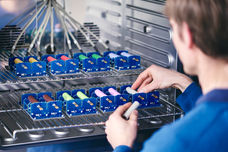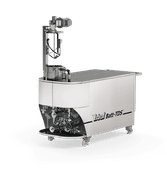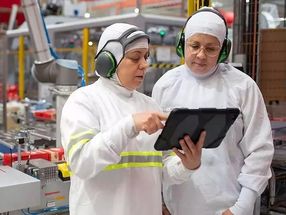Stronger together: Interlocked electrodes push silicon battery lifespan beyond limits
In practical terms, this means electric vehicles can travel farther and smartphones can operate longer using the same-sized battery
Advertisement
As demand surges for batteries that store more energy and last longer—powering electric vehicles, drones, and energy storage systems—a team of South Korean researchers has introduced a groundbreaking approach to overcome a major limitation of conventional lithium-ion batteries (LIBs): unstable interfaces between electrodes and electrolytes.
Most of today’s consumer electronics—such as smartphones and laptops— rely on graphite-based batteries. While graphite offers long-term stability, it falls short in energy capacity. Silicon, by contrast, can store nearly ten times more lithium ions, making it a promising next-generation anode material. However, silicon’s main drawback is its dramatic volume expansion and contraction during charge and discharge, swelling up to three times its original size. This repeated expansion and contraction causes mechanical gaps between the electrode and the electrolyte, quickly degrading battery performance.
To address this, researchers have explored replacing liquid electrolytes with solid or quasi-solid-state electrolytes (QSSEs), which offer better safety and stability. Yet, QSSEs still struggle to maintain full contact with the expanding and contracting silicon, leading to separation and performance loss over time.
Now, a collaborative research team from POSTECH (Pohang University of Science and Technology) and Sogang University has developed an In Situ Interlocking Electrode–Electrolyte (IEE) system that forms covalent chemical bonds between the electrode and electrolyte. Unlike conventional batteries where components merely touch, the IEE system bonds the two into a chemically entangled structure, like bricks held together by hardened mortar, so they remain tightly connected even under intense mechanical stress.
Electrochemical performance tests showed a dramatic difference: while traditional batteries lost capacity after just a few charge-discharge cycles, those using the IEE design maintained long-term stability. Most notably, the IEE-based pouch cell demonstrated an energy density of 403.7 Wh/kg and 1300 Wh/L, representing over 60% greater gravimetric energy density and nearly twice the volumetric energy density compared to typical commercial LIBs. In practical terms, this means electric vehicles can travel farther and smartphones can operate longer using the same-sized battery.
“This study offers a new direction for next-generation energy storage systems that simultaneously demand high energy density and long-term durability,” said Professor Soojin Park of POSTECH, who co-led the study. Professor Jaegeon Ryu of Sogang University added, “The IEE strategy is a key technology that could accelerate the commercialization of silicon-based batteries by significantly enhancing interfacial stability.”
This research was led by Professor Soojin Park (Department of Chemistry, POSTECH), Dr. Dong-Yeob Han, Dr. Im-Kyung Han (Department of Materials Science, POSTECH), and Professor Jaegeon Ryu (Department of Chemical and Biomolecular Engineering, Sogang University). The findings were recently published in the journal Advanced Science, with support from the Korea Institute of Materials Science and the Korea Institute for Advancement of Technology.
Original publication
Other news from the department science
These products might interest you
Most read news
More news from our other portals
See the theme worlds for related content
Topic World Battery Technology
The topic world Battery Technology combines relevant knowledge in a unique way. Here you will find everything about suppliers and their products, webinars, white papers, catalogs and brochures.

Topic World Battery Technology
The topic world Battery Technology combines relevant knowledge in a unique way. Here you will find everything about suppliers and their products, webinars, white papers, catalogs and brochures.






























































